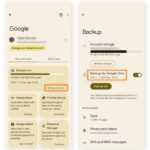Sinus pressure can be incredibly uncomfortable. That feeling of fullness and tightness around your eyes, forehead, and nose, often accompanied by a dull, persistent ache, is a common complaint. It’s especially frustrating how easily this discomfort can intensify with simple movements – that throbbing sensation when you bend over or turn your head too quickly is a clear sign your sinuses are congested and causing pressure. You want relief, and you want it fast.
While the exact reasons behind the existence of sinuses remain somewhat of a medical mystery, their ability to cause discomfort is definitely not. Sinus pressure arises when the sinus passages become swollen or blocked, leading to that familiar facial pain. Fortunately, there are several effective methods you can try right now to clear your sinuses and find immediate relief at home.
Understanding Why Sinus Pressure Occurs
Before diving into solutions, it’s helpful to understand what’s causing that pressure in the first place. “Facial pressure and discomfort are typically felt when there’s swelling in or around the sinuses,” explains Dr. Mas Takashima, an ENT specialist at Houston Methodist. “This can stem from issues within a sinus itself or from a sinus becoming blocked.”
This blockage and swelling can be triggered by various factors, including:
- Upper respiratory infections: The common cold is a frequent culprit.
- Sinus infections (sinusitis): Infections can cause significant inflammation and mucus buildup.
- Allergies: Allergic reactions can lead to sinus inflammation and congestion.
- Atmospheric pressure changes: Changes in weather can sometimes affect sinus pressure.
These common triggers can be further exacerbated by underlying nasal or sinus conditions such as a deviated septum, nasal polyps, or naturally narrow sinus openings. Even minor swelling from a cold or allergies can then be enough to obstruct these narrower passages, leading to pressure buildup.
Think of it like a bag of chips on an airplane, as Dr. Takashima illustrates. The air pressure changes cause the bag to swell. Similarly, if external pressure increases and air can’t move freely in and out of your sinuses, these air pockets swell and cause pain. The swelling and increased mucus production from infections or allergies only add to this discomfort.
Immediate Sinus Relief Techniques
When sinus pressure hits, you need quick solutions. Often, the best approach depends on the underlying cause, but in many cases, you can effectively relieve sinus pressure at home. Here are some remedies to try for immediate relief:
1. Nasal Saline Rinse for Instant Clearing
Dr. Takashima strongly recommends starting with a saline rinse kit, regardless of whether your pressure is from an infection, allergies, or another cause. “The main idea is to clean out your nose, your natural air filter,” he states. “Saline irrigation helps flush out any irritants causing swelling or mucus production.”
How to do a sinus rinse for immediate relief:
- Prepare your solution: Use a sterile saline solution. You can buy pre-mixed packets or make your own using distilled, bottled, or boiled and cooled water mixed with non-iodized salt.
- Choose your method: You can use a neti pot, bulb syringe, or squeeze bottle.
- Lean over a sink: Tilt your head to one side.
- Insert the spout: Gently insert the spout of your chosen device into the upper nostril.
- Pour or squeeze: Slowly pour or squeeze the saline solution into your nostril. It should drain out the other nostril.
- Repeat on the other side: Switch sides and repeat the process for the other nostril.
- Gently blow your nose: After rinsing, gently blow your nose to clear out any remaining mucus and solution.
You can perform sinus rinses as frequently as needed. Just ensure you are always using sterile water to avoid introducing bacteria into your sinuses. This method offers immediate physical clearing of mucus and irritants, providing fast relief from pressure.
2. Elevate Your Head for Quick Drainage
Sinus pain can worsen with even slight movements, especially those that lower your head. “Any position change that puts your head below your heart increases blood flow to your face and head,” Dr. Takashima explains. “This can lead to pulsations within the sinuses that can be really painful.”
Immediate relief tip:
- Prop yourself up: When resting or sleeping, use extra pillows to keep your head elevated above your heart.
- Avoid bending over: Minimize activities that require you to bend over for extended periods.
By keeping your head elevated, you encourage better blood flow and sinus drainage, which can quickly reduce pressure and throbbing pain.
3. Warm Compress for Soothing Relief
When it comes to pain relief, heat is often more effective than cold for sinus pressure. “A warm compress is helpful for relieving sinus pain as it can help lessen the pressure felt,” Dr. Takashima adds.
How to use a warm compress for immediate comfort:
- Soak a washcloth: Run a clean washcloth under hot water until it’s thoroughly damp and warm (but not scalding).
- Apply to your face: Gently apply the warm, damp washcloth to your face, covering your forehead, nose, and cheek areas where you feel sinus pressure.
- Relax and repeat: Leave the compress on for several minutes and repeat as needed for soothing relief. The warmth can help to relax the tissues and alleviate pressure.
4. Decongestant Nasal Sprays for Fast Relief of Congestion
For sinus pressure accompanied by significant nasal congestion, decongestant nasal sprays can provide rapid relief by opening up the nasal passages.
“If you have a really bad cold and are very congested, a nasal decongestant spray can help open up the sinuses,” says Dr. Takashima. “You might even use this opportunity after using the spray to do a nasal rinse and really clear out the contaminants causing problems in your nose.”
Important for immediate but temporary relief:
- Use as directed: Follow the instructions on the product label carefully.
- Limit use to 3 days: Decongestant nasal sprays can be addictive and lead to rebound congestion if used for more than three days. They are a quick fix, not a long-term solution.
5. Over-the-Counter Pain Relievers for Immediate Pain Management
For occasional sinus pain and pressure, over-the-counter pain relievers can be very helpful in managing discomfort quickly.
“Nonsteroidal anti-inflammatory drugs (NSAIDs) tend to work better for sinus pressure than acetaminophen-based painkillers,” Dr. Takashima advises. “NSAIDs help temporarily reduce some of the swelling that’s causing discomfort.”
Options for quick pain relief:
- NSAIDs: Consider ibuprofen (Advil, Motrin) or naproxen (Aleve) for their anti-inflammatory properties.
- Follow dosage instructions: Always adhere to the recommended dosage on the medication packaging.
6. Hydration for Thinner Mucus and Faster Drainage
While not as immediate as some other methods, staying well-hydrated is crucial for managing sinus pressure and promoting faster relief.
“When you’re dehydrated, the consistency of your mucus changes – becoming a lot thicker,” explains Dr. Takashima. “Thicker mucus flows slower through your sinuses, potentially leading to more blockage and pressure.”
Simple hydration tip:
- Drink plenty of fluids: Increase your intake of water, clear broths, and herbal teas throughout the day to help thin mucus and promote drainage.
7. Sinus Massage for Potential Relief
Many individuals find sinus massage helpful for relieving pressure. While Dr. Takashima notes that there isn’t strong scientific evidence supporting its effectiveness, he acknowledges it’s harmless and can be beneficial for some.
“Generally speaking, massaging increases blood flow to the area,” Dr. Takashima says. “If it makes you feel better, keep doing it. It’s not going to cause problems.”
Quick sinus massage techniques:
- Gentle pressure: Use your fingertips to apply gentle, circular pressure to areas around your sinuses – forehead, bridge of your nose, cheekbones.
- Massage points: Focus on points just below your eyebrows, on either side of your nose, and along your cheekbones.
- Repeat as needed: Massage these areas for a few minutes at a time, repeating throughout the day as needed.
When to Seek Medical Advice
While these home remedies can provide immediate sinus relief, it’s important to know when to seek professional medical help.
“Often, people can manage sinus pressure at home and don’t need to see a doctor,” Dr. Takashima says. “However, if sinus pain is impacting your quality of life – disrupting sleep or concentration – it’s important to get it checked out. Identifying the underlying cause is crucial in these cases.”
See a doctor if:
- Symptoms worsen or don’t improve: If home remedies don’t provide sufficient relief.
- Severe pain: If the pain is intense or unbearable.
- Symptoms persist for more than a week: If your sinus pressure doesn’t resolve within a week.
- Fever: If you develop a fever along with sinus pressure.
- Unusual symptoms: Vision changes or other concerning symptoms accompany the pain.
- Recurrent sinus issues: If you experience frequent episodes of sinus pressure.
A doctor can properly diagnose the cause of your sinus pressure, whether it’s allergies, infection, or another issue, and recommend appropriate treatment to provide both immediate and long-term relief. They may use tools like nasal endoscopes or CT scans to get a clearer picture and rule out other potential causes of facial pain.
Don’t let sinus pressure disrupt your life. Try these immediate relief strategies and consult a healthcare professional if your symptoms are persistent or severe.

